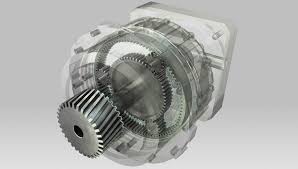Mobile:+86-311-808-126-83
Email:info@ydcastings.com
Exploring the Variations and Applications of Motor Housings in Modern Machinery
Understanding Motor Housings The Unsung Heroes of Machinery
Motor housings are often regarded as the unsung heroes of mechanical engineering, serving crucial roles in a variety of applications, from industrial machinery to consumer electronics. Their primary function is to protect the motor from external elements while facilitating effective cooling and proper operation. This article delves into the significance of motor housings, their designs, materials, and their impact on efficiency and longevity.
What Are Motor Housings?
At its core, a motor housing is an enclosure that contains all the essential components of an electric motor. This includes the stator, rotor, and various electrical connections. The housing not only provides structural support but also shields the internal parts from dust, moisture, and other environmental factors that could lead to wear and tear. Moreover, a well-designed motor housing enhances the overall performance of the motor by ensuring efficient heat dissipation.
Design Considerations
The design of a motor housing is critical for functionality. Several factors must be considered
1. Size and Shape The dimensions of the motor housing are determined by the size of the motor components. Efficient design ensures that there is adequate space for airflow while maintaining a compact appearance.
2. Ventilation Effective cooling is vital for motor performance. Motor housings often feature vents or cooling fins to facilitate airflow, reducing the risk of overheating during operation.
3. Mounting Options Depending on the application, motor housings may come with various mounting configurations. These can include flanges, feet, or other mechanisms that allow easy installation on machinery or assembly lines.
4. Sealing In environments exposed to dust, water, or chemicals, sealing the motor housing becomes paramount. Gaskets and seals are incorporated to ensure that contaminants cannot infiltrate the motor, thus prolonging its lifespan.
motor housings

Materials Used in Motor Housings
The choice of material for motor housings significantly impacts their durability and performance. Common materials include
- Aluminum Known for its lightweight properties and excellent thermal conductivity, aluminum is a popular choice for motor housings. It provides good protection against corrosion and can be manufactured into intricate designs.
- Steel Steel housings offer enhanced strength and durability, making them ideal for heavy-duty applications. Though heavier than aluminum, steel can withstand harsher conditions and is often used in industrial settings.
- Plastic and Composite Materials These materials are frequently employed in smaller motors and consumer devices. They are lightweight, resistant to corrosion, and can be molded into complex shapes. However, they may not provide the same level of durability as metal options in high-stress environments.
Impact on Efficiency and Longevity
The design and material of a motor housing directly influence the efficiency and longevity of the motor itself. A well-ventilated housing allows for better heat dissipation, which is critical in preventing overheating. Overheating can lead to degradation of components and ultimately result in motor failure. Additionally, a sturdy, sealed housing protects against external contaminants that can lead to corrosion and wear, thereby extending the motor’s operational life.
Furthermore, advancements in manufacturing technologies have enabled the production of motor housings that are not only more efficient but also more environmentally friendly. The shift toward lightweight, recyclable materials is a crucial step in reducing the carbon footprint associated with motor manufacturing and operation.
Conclusion
Motor housings may not be the most glamorous components of machinery, but their importance cannot be overstated. They play a vital role in protecting motors, enhancing efficiency, and ensuring longevity. As technology continues to evolve, the design and materials used in motor housing will undoubtedly advance, meeting the ever-growing demands of modern-day applications. Understanding the intricacies of motor housings helps us appreciate the complexity of machinery and the engineering marvels that drive our world forward. Whether in industrial settings or household appliances, these housings are fundamental in keeping the wheels of technology turning smoothly.
-
Why Should You Invest in Superior Pump Castings for Your Equipment?NewsJun.09,2025
-
Unlock Performance Potential with Stainless Impellers and Aluminum End CapsNewsJun.09,2025
-
Revolutionize Your Machinery with Superior Cast Iron and Aluminum ComponentsNewsJun.09,2025
-
Revolutionize Fluid Dynamics with Premium Pump ComponentsNewsJun.09,2025
-
Optimizing Industrial Systems with Essential Valve ComponentsNewsJun.09,2025
-
Elevate Grid Efficiency with High-Precision Power CastingsNewsJun.09,2025











